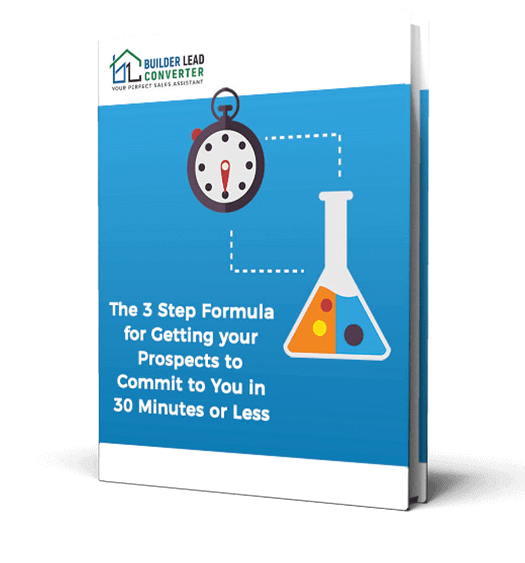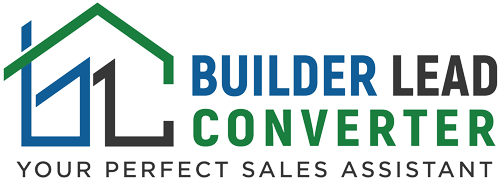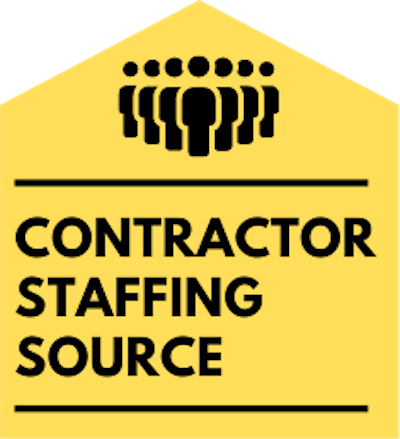How to Create a Winning Sales Pitch in 5 Easy Steps
It is important to research your audience and tailor your pitch to their needs while also emphasizing the benefits of what you are offering. Additionally, practice delivering your pitch so that you are able to express yourself clearly and professionally.
Research Your Audience
Moreover, evidence suggests that targeting customers with relevant content has been proven to increase conversions. For example, A/B testing show that tailored messaging results in higher click-through rates when compared against generic copy. Additionally, personalizing emails with a user’s name can also result in higher engagement and response rates than those without personalization.
By taking the time to research an audience before getting started with creating a sales pitch, not only do companies ensure that their message hits home but they also gain valuable insight into their customers needs which will ultimately lead to better proposals and more successful sales outcomes.
Now that we understand why it’s important to research an audience its time to move onto understanding what their needs and goals are. To do this, its necessary to identify what these individuals or businesses hope to gain from purchasing your product or service and how it would address issues they currently face which will lead us into our next discussion…
Must-Know Points
What are Their Needs and Goals?
One common dilemma here is whether or not it’s best to focus solely on the immediate needs of the customer. On one hand, this can be a good way to keep focused on what they need right now. On the other, focusing exclusively on short-term solutions could leave bigger and better opportunities untapped.
A possible way forward is to marry short-term and long-term objectives – look for ways to meet a potential customer’s current needs, whilst leaving room for further options in the future. By doing this, you can both solve their immediate problems as well as build strong foundations for future growth. Proactive approaches such as this can help you stand out from competitors and demonstrate that you value the client relationship moving forward.
It’s also important to remember that everyone’s goals are different – even if two customers have similar operations, each will still have their own unique set of requirements that must be taken into account when crafting your sales pitch. Try not to generalize and take time to learn what they need exactly in order to craft an effective solution tailored exactly to them (not just a generic one).
Having identified their needs and goals, it’s time to move onto crafting your message so it resonates with them. The next section will discuss how best to create an impactful message that conveys your solution clearly while keeping your audience engaged.

Create an Impactful Message
When creating an effective sales pitch, having an impactful message is of the utmost importance. After ensuring you understand your customer’s needs and goals, you can create a convincing case for why they should choose your solution. What components should be included to make your message impactful?
On one hand, some believe that keeping the message brief is critical to making a lasting impression, as customers usually have short attention spans. For a sales pitch to be successful in this context, concisely presenting the main points to explain why the offering is the right fit will help pique their curiosity.
On the other hand, others argue that providing additional details and examples can ensure a better understanding by potential customers of what they would be getting and why they should invest in it. By illustrating specific scenarios in which the product/service achieved successful outcomes and weaving that into the script of the sales pitch, customers are more likely to be receptive to the ideas presented.
Based on evidence from multiple studies over the years, a hybrid approach seems to reap the best results in creating an impactful message. When crafting a sales pitch, achieve balance by including both succinct information that paints a clear picture of what is offered and illustrative anecdotes that build an emotional connection with buyers and bring solutions to life. This balance allows for enough detail for customers to seriously consider investing in what is being offered without bogging them down with superfluous information.
Both approaches have merits, but striking the right balance between brevity and substance within your sales pitch can help increase chances of success. With an impactful message that aligns with your customer’s needs and goals while also engaging them emotionally, you can transition confidently into structuring that pitch so it resonates further with prospective buyers.
- A study published in 2012 found that effective storytelling is the single most important element of a successful sales pitch.
- According to an analysis by Harvard Business Review, salespeople who performed well as measured by their sales volume incorporated five main factors into their pitches: personalization, audience engagement, data analytics, and product comparison.
- An analysis conducted by Salesforce found that 75% of sales professionals believe that storytelling is the most important element for success when delivering a sales pitch.
Message Structure
When trying to decide which information to include in your pitch, think about the goal of each separate element in the conversation. What do you want them to know? What do you want them to take away from the pitch? Moreover, try thinking of different elements of your message as benefits rather than features. That way you can highlight the value that each component provides. That being said, finding a healthy balance between providing key information and presenting your story too heavily can be difficult. Ultimately, how much detail you need for a successful sales pitch will differ depending on the customer and product or service you are offering.
It is also important to consider who your audience is when creating your message. How much detail will they need? Is there information everyone will require or do individuals need to hear different things? Understanding who your audience is can help inform how you structure your story so the information resonates with each individual buyer.
Finally, always finish up by delivering on what you promised in the beginning of the conversation; sum up key points and reinforce why this opportunity makes sense for both parties involved before transitioning into gathering additional information to support these objectives. Doing so has been proven time and time again to result in more positive outcomes throughout all stages of the sales process. The conclusion serves as a reminder of why you are coming together which helps ease any tensions or miscommunications that may arise during negotiations.
Gather Information to Support Your Objectives
Make sure that what you are presenting is accurate and reliable; avoid giving generalizations or assumptions that can’t be backed up with supporting data. Emphasize how your product or service points out a solution for a particular set of conditions facing the customer by focusing on short-term results. That way, companies are more likely to continue their engagement with your organisation in the long-term.
With all of this in mind, it’s time to shift gears and share a little bit about what your product or service specifically can offer so that your audience has all the details needed to make an informed decision. While it might be tempting to simply regurgitate specifications from press releases, it’s wise to remember that sales pitches demand customization and personalization so potential customers better understand how they will benefit from investing in your offering.

Product/Service Information
When providing information about your product or service, be sure to highlight both its features and its benefits. Features discuss what a product or service does while also stressing how it works and why it matters in comparison to other products on the market. Benefits communicate how valuable a product or service can be for a customer, allowing them to take an action based on what they gain from their purchase. It is essential to incorporate both of these into your sales pitch.
It is also key to provide concrete examples where possible. Visuals, video clips, and stories are all ways that are particularly successful in demonstrating product features and benefits as these help prospects better connect and relate with what you are selling.
Finally, not only do prospects need to know what they get from purchasing your product or service but also why they should use it now rather than later or never. Providing evidence that demonstrates urgency adds an extra layer of motivation which could compel a potential buyer into making a decision sooner rather than later.
At this point, with all the relevant information gathered and thoroughly presented, it is time to move onto discussing the potential customer benefits of using your product or services. These go beyond simply talking about features and actually provide insight into why they should make an immediate purchase decision.
Potential Customer Benefits
For any item being sold, the customer should feel like they are getting some type of benefit, such as improved convenience, cost savings, etc. In addition, emphasizing long-term benefits can help build relationships with customers and transform them into loyal customers. For example, offering a warranty or a satisfaction guarantee can illustrate longer lasting support that customers may appreciate and value more than short-term discounts or promotions.
When it comes to deciding between short-term versus long-term benefits for customers, there is no single clear answer as to which is best for any given situation. Ultimately, it will depend on each individual business’s goals and objectives for their sales pitch. For instance, if you are looking for instant gratification then highlighting shorter-term perks such as discounts or special offers may be more appropriate than discussing longer-term benefits like warranties or satisfaction guarantees. However, if you are looking for repeat customers who will stick around for the long haul then focusing on longer-term rewards might make more sense.
Evidence suggests that emphasizing customer benefits leads to higher conversion rates. For instance, research conducted by Nielsen revealed that when customer benefits were highlighted prominently in advertising campaigns and other sales pitches over product features, consumers reacted positively to the message with greater recall and purchase intent than when product attributes were emphasized instead. This supports the idea that focusing on what potential customers can gain from a product or service is an effective sales tactic.
By clearly communicating potential customer benefits in a sales pitch alongside important product/service information, businesses can create a winning approach that resonates with potential customers and drives conversions.
Responses to Common Questions with Explanations
blank
How can I accurately measure the effectiveness of my sales pitch?
What key elements should I include in my sales pitch?
What techniques can I use to make my sales pitch stand out?
Second, simplify complex concepts into easily digestible terms. Use visuals as much as possible; whether it’s images, graphs, or product demonstrations. This will help potential customers to quickly grasp the value of what you’re offering in a concrete way.
Third, emphasize your unique selling points. Explain why your offering is different from the competition and how it stands out as preferable for customers.
Fourth, ask engaging questions throughout your presentation to keep the audience engaged and actively listening. This can also help identify their main pain points to tailor the rest of your discussion towards addressing their specific needs.
Fifth, finish on an optimistic note by sharing how your product can leave a lasting impression on customers. By providing real-world examples or customer stories that illustrate how your solution improves their lives or businesses, you can increase its memorability and enhance chances of success in the long run.





